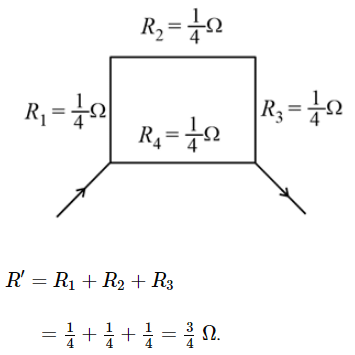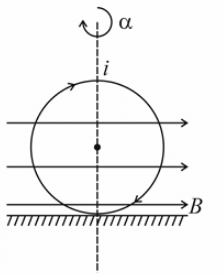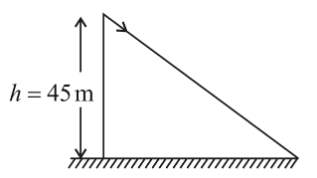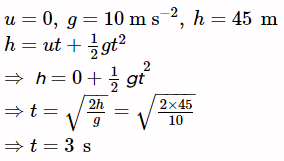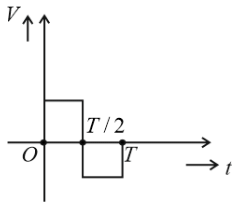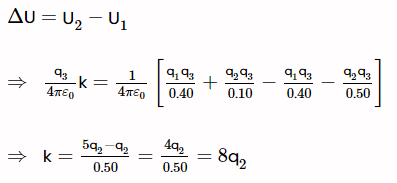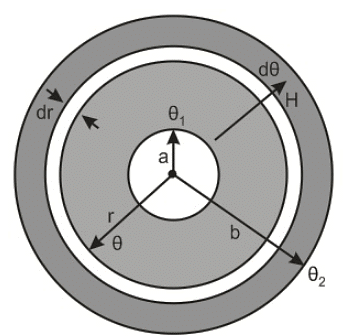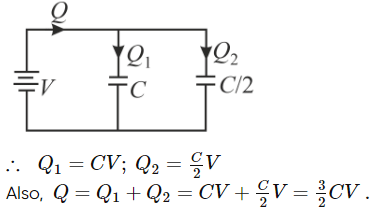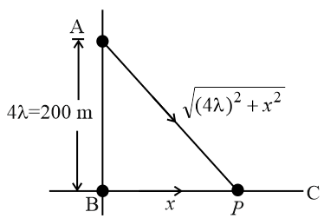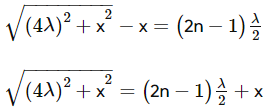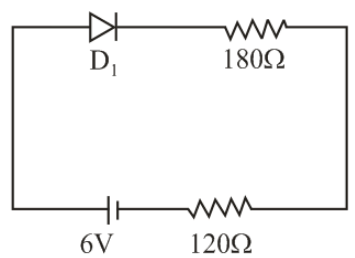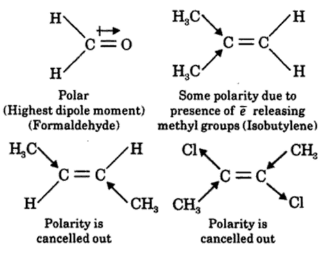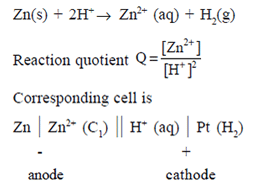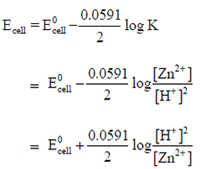JEE Main Practice Test- 1 - JEE MCQ
30 Questions MCQ Test Mock Tests for JEE Main and Advanced 2025 - JEE Main Practice Test- 1
The self inductance of an electric fan motor is 10 H. In order to impart maximum power at 50 Hz, it should be connected to a capacitance of
A car of mass 800 kg moves on a circular track of radius 40 m. If the coefficient of friction is 0.5, then the maximum velocity with which the car can move is
Directions: This question has two statements, Statement 1 and Statement 2. Of the four choices given after the statements, choose the one that best describes the two statements.
Statement 1: Davisson-Germer experiment proved the wave nature of electrons.
Statement 2: If electrons have wave nature, then they can interfere and show diffraction.
A semi circular wire of radius 'r' is charged uniformly with a charge 'Q' as shown in the figure. Then, the force experienced by a charge 'q' kept at its centre is

A shell is fired from a cannon with a speed of 100 ms-1 at an angle 30° with the vertical (y-direction). At the highest point of its trajectory, the shell explodes into two fragments of masses in the ratio 1 : 2. The lighter fragment moves vertically upwards with an initial speed of 200 ms-1. What is the speed of the heavier fragment at the time of explosion?
Consider a solid sphere of mass M and radius R. The energy released in forming this solid sphere is
A block of mass m is placed on a surface with a vertical cross-section given by y = x3/6. If the coefficient of friction is 0.5, then the maximum height above the ground at which the block can be placed without slipping is
The logic gate circuit shown in the figure realises which of the following functions?
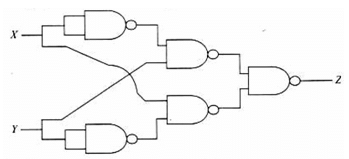
A horizontal force of 10 N is necessary to just hold a block stationary against a wall. The coefficient of friction between the block and the wall is 0.2. The weight of the block is-
The magnetism of a magnet is due to which of the following?
The resistance of the rod is 1 Ω. It is bent in form of a square. What is the resistance across adjacent corners?
Figure shows the vertical cross-section of a vessel filled with a liquid of density ρ. The normal thrust per unit area on the walls of the vessel at point P, as shown will be
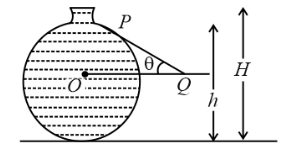
A conducting ring of mass 2 kg and radius 0.5 m is placed on a smooth horizontal plane. The ring carries a current i = 4 A. A horizontal magnetic field B = 10 T is switched on at time t = 0 as shown in the figure. The initial angular acceleration of the ring will be
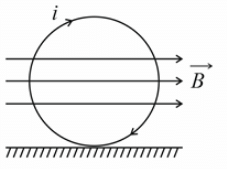
A stone is dropped from a height of 45 m on a horizontal level ground. There is the horizontal wind blowing due to which horizontal acceleration of the stone becomes 10 m s−2. (Take g = 10 m s−2). The time taken (t)t by stone to reach the ground and the net horizontal displacement (x) of the stone from the time it is dropped and till it reaches the ground are respectively
The current (I) in the inductance is varying with time according to the plot shown in the figure.
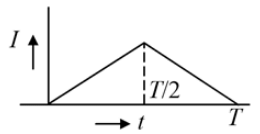
The correct variation of voltage with time in the coil is
Two charges q1 and q2 are placed 30 cm apart, as shown in the figure. A third charge q3 is moved along the arc of a circle of radius 40 cm from C to D. The change in the potential energy of the system is ![]() where k is
where k is
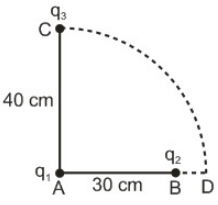
A point source of heat of power P is placed at the centre of a spherical shell of mean radius R. The material of the shell has thermal conductivity K. Calculate the thickness of the shell if the temperature difference between the outer and inner surfaces of the shell in steady-state is T.
Two condensers, one of capacity C and other of capacity C/2 are connected to a V - volt battery, as shown in the figure. The work done in charging fully both the condensers is

Two radio antennas radiating waves in phase are located at points A and B, 200 m apart (Figure). The radio waves have a frequency of 6 MHz. A radio receiver is moved out from point BB along a line perpendicular to the line connecting A and B (line BC as shown in the figure). At what distances from B will there be destructive interference?
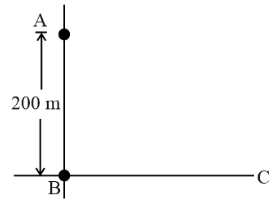
With the assumption of no slipping, determine the mass mm of the block which must be placed on the top of a 6 kg cart in order that the system period is 0.75 s. What is the minimum coefficient of static friction μS for which the block will not slip relative to the cart if the cart is displaced m50 mm from the equilibrium positions and released? Take (g = 9.8 m s-2).
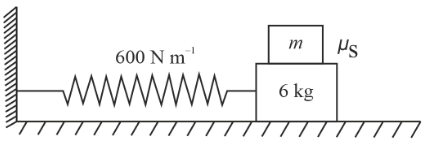
In a large building, there are 15 bulbs of 40 W, 5 bulbs of 100 W, 5 fans of 80 W and 1 heater of 1 kW. The voltage of the electric main is 220 V. The minimum capacity of the main fuse of the building will be (Key in the integral value, in Amperes)
The resistance of a wire is 5 ohm at 50°C and 6 ohm at 100°C. The resistance of the wire at 0°C will be (in ohm)
A copper ball of mass 100 gm is at a temperature T. It is dropped in a copper calorimeter of mass 100 gm, filled with 170 gm of water at room temperature. Subsequently, the temperature of the system is found to be 75°C. T (in °C) is given by:
(Given: room temperature = 30°C, specific heat of copper = 0.1 cal/gm°C)
The circuit contains two diodes each with a forward resistance of 50 Ω and with infinite reverse resistance. If the battery voltage is,6 V, the current through the 120 Ω resistance is mA.
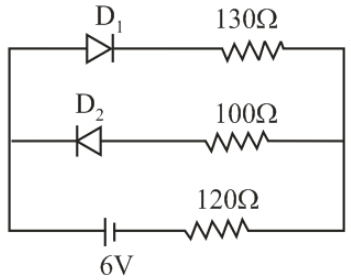
The impulse imparted to a ball of mass m, when it strikes a rigid wall with a speed u and rebounds with the same speed is −αmu, what is the value of α?

If 5.08 g of a cupric salt is dissolved in water and excess of KI is added to the solution, and the liberated I2 requires 25 ml of M/5 Na2S2O3, where it gets converted into S4O62-, then find the weight percentage of copper in the salt.
A cell utilises the reaction Zn (s) + 2H+ (aq) Zn2+ (aq) + H2 (g). Addition of H2SO4 to the cathode compartment will
Which of the following series of reactions correctly represents the chemical relations related to iron and its compound?
|
356 docs|142 tests
|






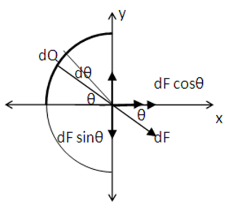
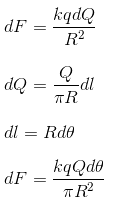

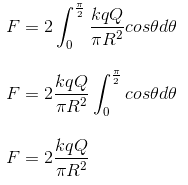
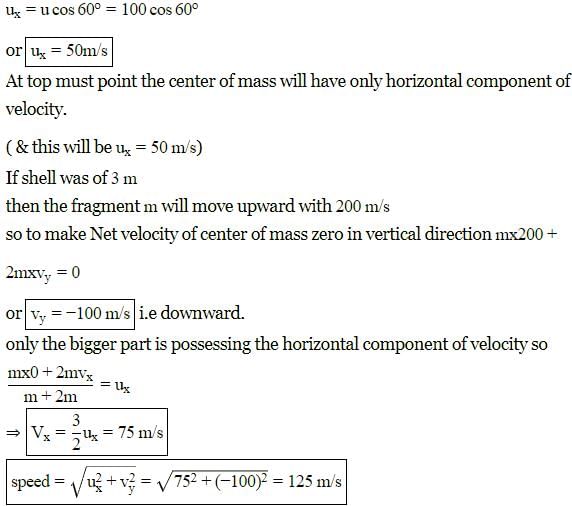

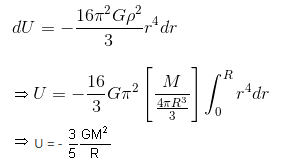



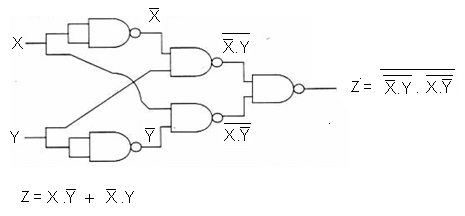
 = current × area of the loop.
= current × area of the loop. is also associated with electron. The vector sum of
is also associated with electron. The vector sum of  provides the net magnetic dipole moment
provides the net magnetic dipole moment  , to the atom.
, to the atom.  is much greater than
is much greater than  , hence magnetism of magnet is due to spin motion of electrons.
, hence magnetism of magnet is due to spin motion of electrons.